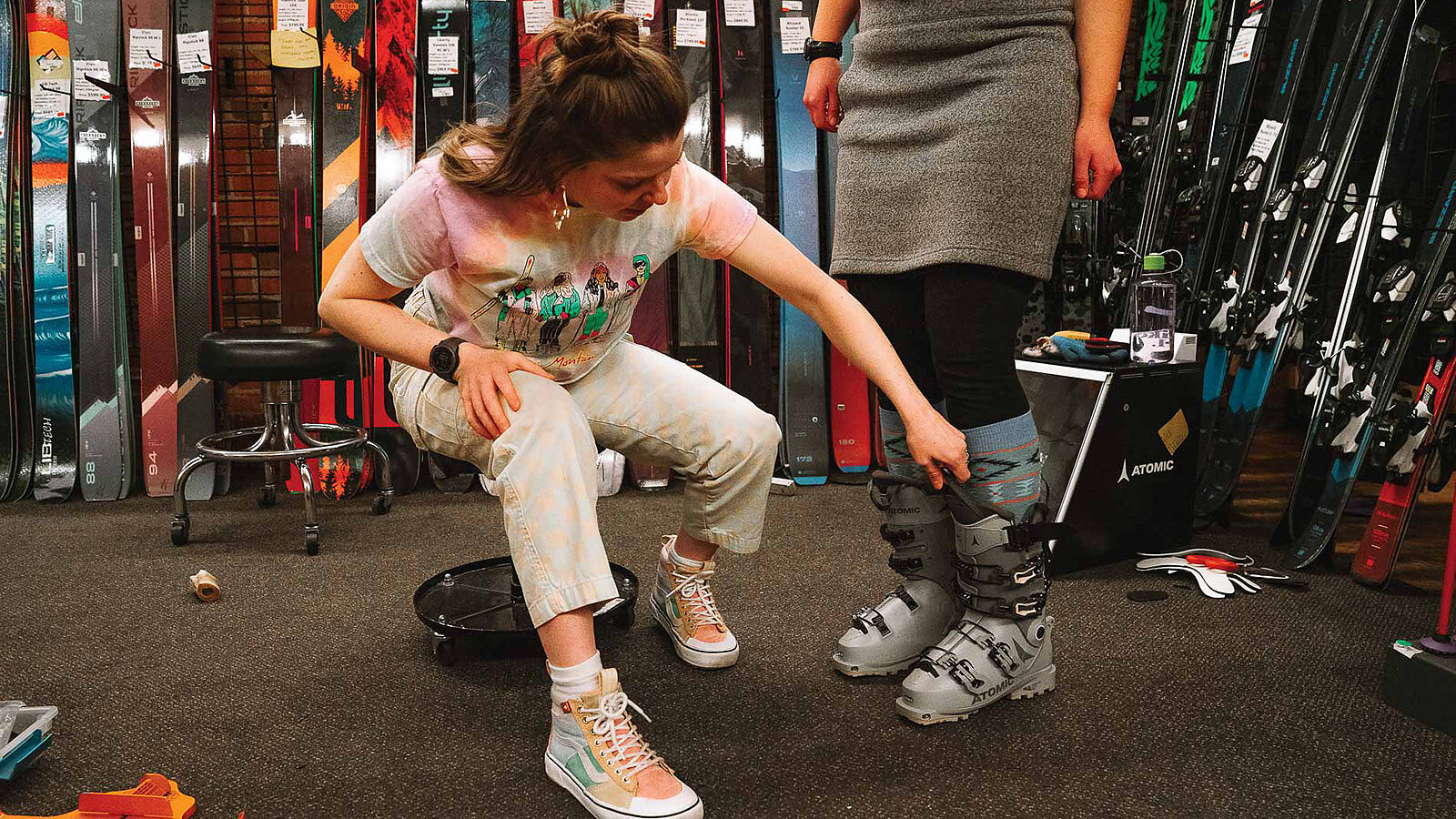
No Small Feat Megan Jackson's Boot Fitting Sixth Sense
Words by Liza Kimberly | Photos by Cierra Coppock
Feet are weird. They’re narrow, wide, flat, tall with high insteps, inflicted with bunions, or occasionally, sixth toes. Few types of shoes highlight these idiosyncrasies more than alpine ski boots. At their core, these boots are snug, stiff, firm plastic shells that skiers cram their feet into to enjoy the sport.
Skiers’ boot preferences are as diverse as their feet. Some want a boot that they can easily walk uphill in while still retaining proficient downhill performance. Others lean toward high-performance boots that provide a snug, aggressive fit for maximum responsiveness. Still others prioritize warmth for sitting on a chilly chairlift. Thus, meeting the specific needs of skiers’ feet is no small feat.
Fortunately, for fervent skiers in the Pacific Northwest, Megan Jackson, a boot fitter at Backcountry Essentials in Bellingham, Washington, is available all season long to mold, punch, cut, trim, and fit any boot to perfection. If anyone has mastered the craft of fitting ski boots, it’s Megan.
In February 2022, I came to Megan with typical skier feet woes: pressure points, tingling, and foot pain. Megan greeted me warmly and displayed a curiosity akin to an eager detective being presented with a new, exciting mystery to solve. She sat me down and examined my feet for 30 seconds.
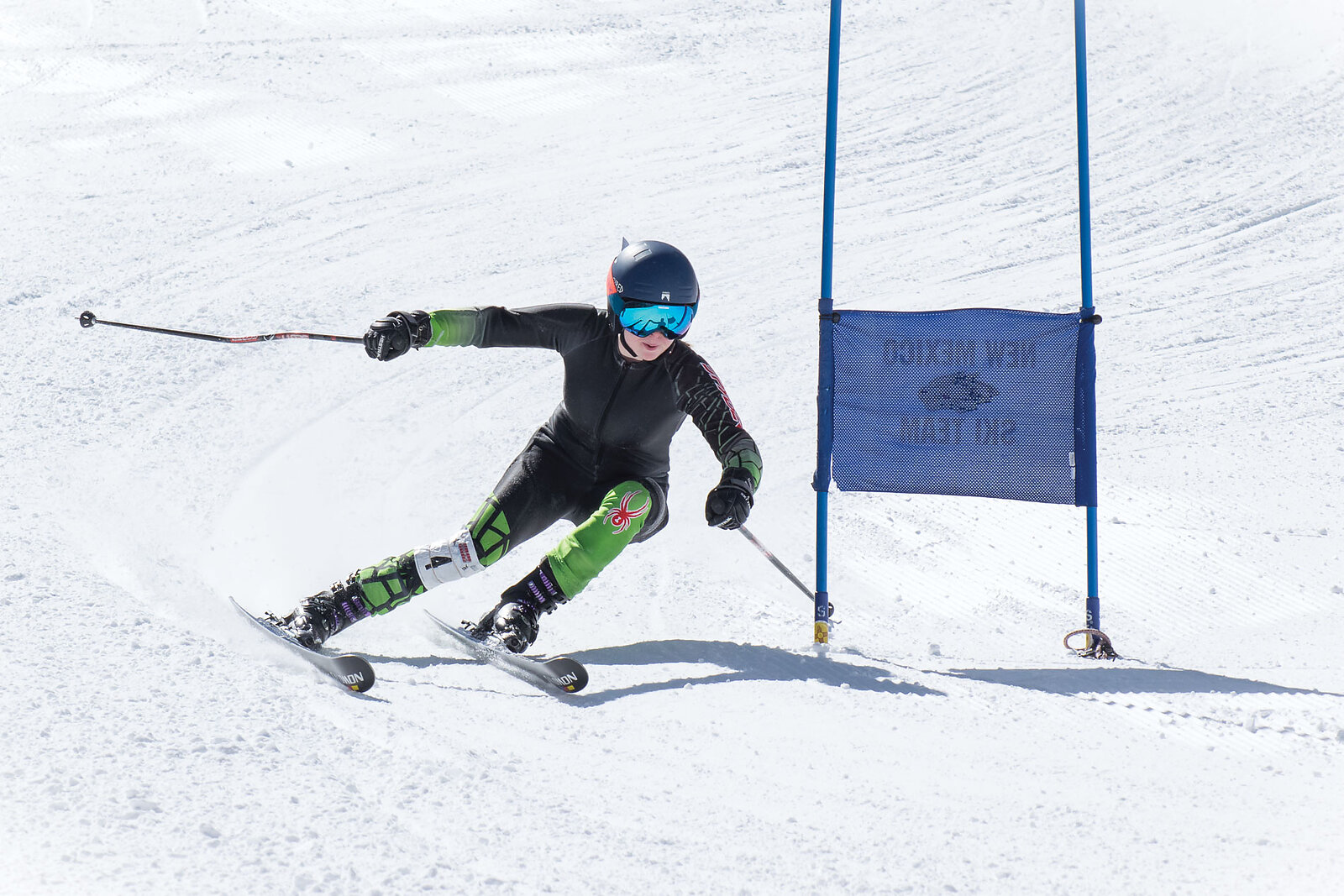
“High instep, strong arches, minimal dorsal flexion,” Megan said, listing medical observations off like a doctor quickly assessing a patient. “Are you a runner? Are you getting toe tingling and lower foot pain in your ski boots?”
She was spot on.
“How’d you deduce that?” I asked.
“When you fit ski boots for 500-plus people per year for 7-plus years—well, you start to see anatomical differences and you see correlations,” Megan said.
Over time, she’s amassed an impressive ability to see someone’s past simply by checking out their feet. People with knee injuries who were diligent with their physical therapy have higher arches. Gymnasts have incredible dorsal flexion. Whatever observation she’s making, Megan does it with spunk and cheer. You wouldn’t know that you might be the 530th person’s foot she’s analyzed this year. She jokes that she’s seen 5,300 toes in the last three months.
“Do you supinate?” Megan asks me.
“Uh, maybe?” I respond. “I’m not sure.”
She lifts the bottom of my Blundstones and runs her fingers along the outside edge of the sole where the tread is worn and smooth—confirmation that I weight the outside of my feet when I walk, a true supinate-r. And, also, a plausible explanation for my utterly persistent outer ankle rub.
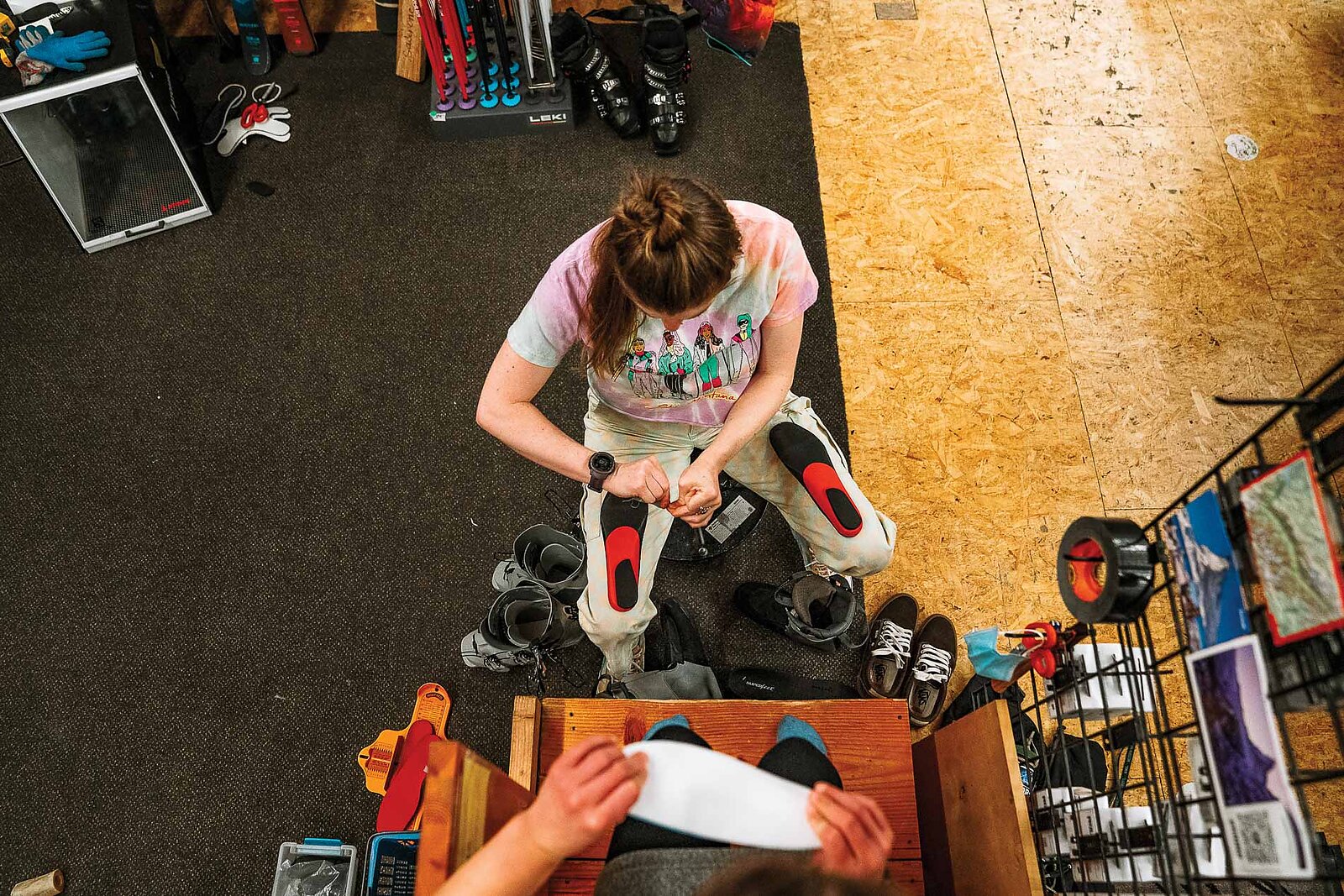
Megan never thought of herself as a scientist. She went to school at the University of New Mexico to study business but, in reality, she was there solely because she wanted to ski race. She soon realized she could only get so far in school if she had no interest in what she was studying.
“I ended up dropping out and becoming a board-certified dirtbag who worked in a ski shop,” Megan said. “I loved it.”
She started at a small ski shop in Albuquerque, New Mexico. It was there she set her eyes on a career in boot fitting. A fitting position opened, but her supervisor told her she wasn’t “mechanical enough,” and they hired a man instead. Fortuitously for Megan, that guy quit just days before the “master-fitting” school began—an intensive, three-day boot fitting school where aspiring fitters were taught to grind plastic and make foot holds. Megan approached her supervisor again.
“[If] you tell me I can’t do something,” Megan said. “I’ll do it.”
This time, he agreed to let her attend. So began a 7-year, and counting, career in fitting ski boots. Over the years Megan has built a strong reputation and actively worked to reshape and change the industry. In Backcountry Essentials on that February day, she smiled with contentment and a hint of pride.
“Boot fitting is what made me realize that I wanted to study something that actually captured my attention.” Megan said. “I underestimated my abilities the first time around in school and was just attempting to study something that I thought that I could do rather than something I was passionate about.”
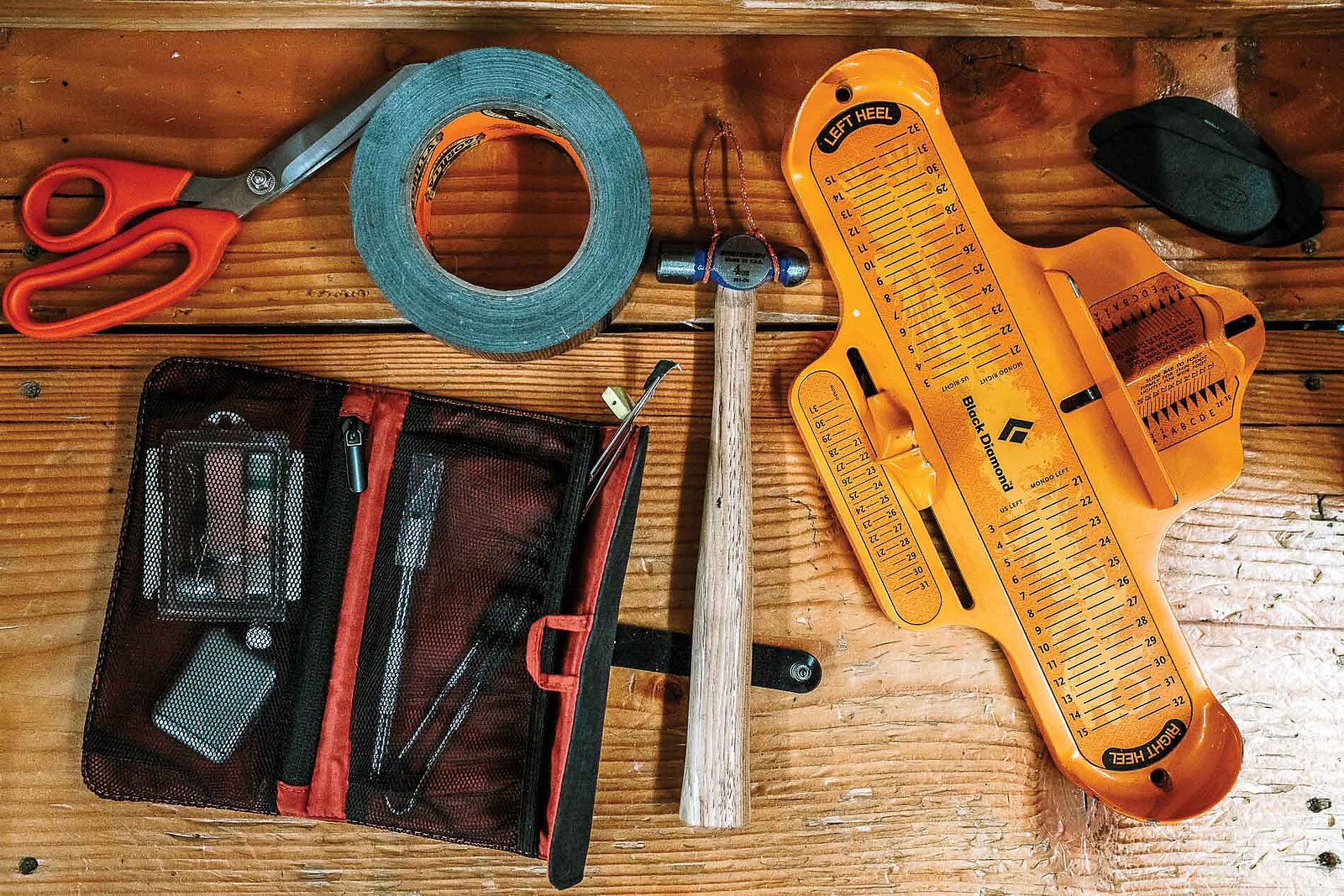
As Megan advanced her skills, she upended her identity of not being a scientist because, at its core, boot fitting is a science. She describes her practice as a form of evidence-based learning: collecting foot data to draw boot conclusions. Sometimes, that data comes from the bottom of a Blundstone.
At my appointment, Megan pulled out her next trick. As any scientist knows, more diverse data leads to stronger conclusions. This one was simple: put on my boots, tighten the buckles, and jump around for five minutes. I danced around the shop with my rolled-up jeans and clunky ski boots and then took them off. She looked for the data: red spots. Blood rushes back to areas of the feet that were squashed and deprived of blood flow, thus revealing possible pressure points.
Now, with problem areas identified, Megan’s interdisciplinary knowledge shifts to material science. Different plastics melt at different temperatures and respond uniquely to force. Some are easier to mold and manipulate; others are stiff. Atomic brand boots, for example, are notoriously malleable, while Dynafit boots tend to be more stubborn. In Megan’s opinion, understanding plastics is one of the skills that takes the longest to learn, and being able to apply this knowledge makes for a seasoned boot fitter.
“I’ve been doing it long enough at this point that I do it all by touch,” Megan said. “When I first started, I was always using a temperature gun. New models come out every year, though, so we are always updating our knowledge to make sure we don’t mess up anyone’s brand-new boots.”
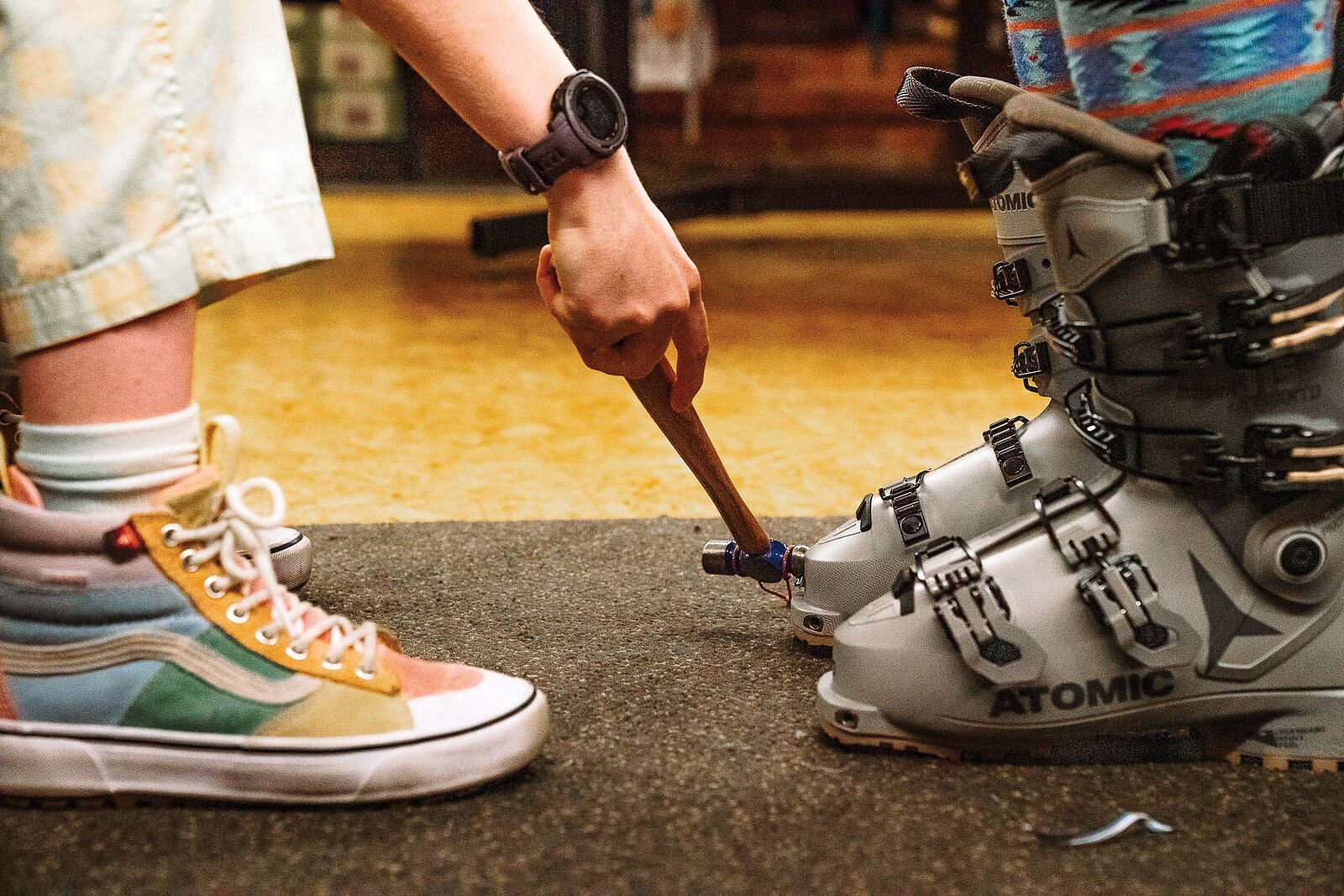
On a daily basis, Megan is hammering plastic and analyzing gaits. On a bigger scale, she’s spurring a radical shift within the ski industry. As she first encountered in that ski shop in Albuquerque some years ago, there’s a glaring, underpinning truth: “I’m a female in a male-dominated industry!”
This occasionally manifests in negative interactions with customers. Still, Megan encounters this less and less, perhaps owing to the support and empowerment she feels daily from her co-workers. Frank Haines, one of her mentors and collaborators, regularly brags to customers about Megan’s skill and even sends them her way when he’s stuck with a boot problem he can’t solve.
Being one of few women in a professional boot fitting role—Megan, to date, has only met one other female fitter—has afforded her a unique perspective on identifying sexism in the ski industry. This extends to the initial design phase of ski boots, when gender bias can also manifest. She frowns as she describes the enormous gap in the ski boot market. Boots are still overwhelmingly designed for men’s anatomy and skiing style. As a result, very few boots are made for narrow, low-volume feet—the predominant female foot shape. Boots are often too soft or snug in the forefoot but loose in the ankles, two common problems for women that make charging down a slope more challenging and less comfortable.
Megan has tried to voice these deficits to manufacturers but has repeatedly been met with distrust and dismissal— “Are you sure you’re doing it right? We’ve never heard that before.”
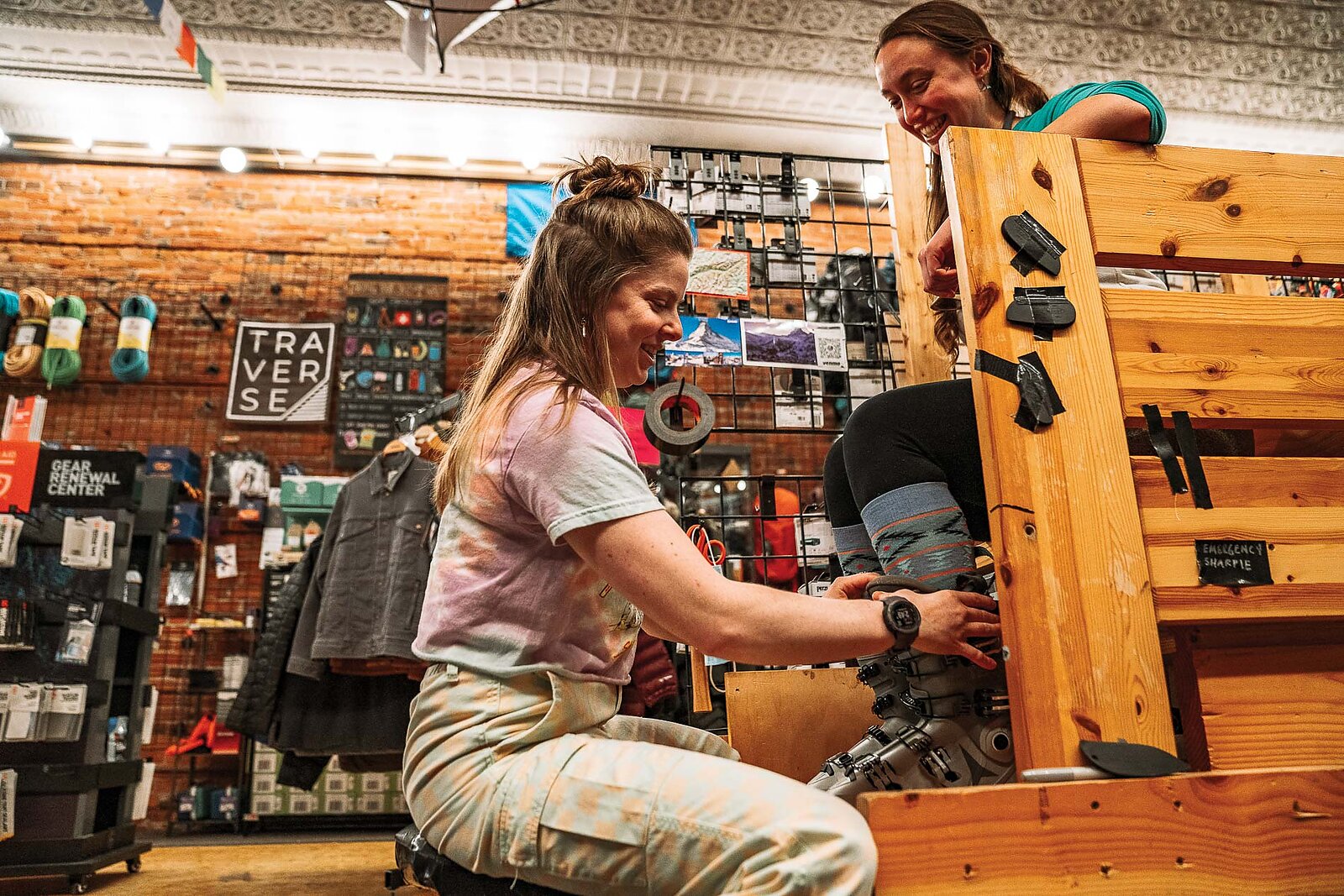
Megan claims they’re more interested in hearing her opinions on color swatches than actual designs. So instead, she focuses on what’s in front of her: the customer on the bench. Here, she can make a positive change every day. That daily, small-scale change adds up—she was booked three weeks out from October to March last winter. With each session, Megan is proving that women can not only have boots that fit, they can have boots that charge, even with prevalent design oversights.
However, these deficits in equipment have also allowed Megan to master the final step in the boot fitting process: the boot craft. Megan crafts creative solutions by blending her knowledge of a boot’s materials, the customer’s foot anatomy, and their skiing goals. It’s her favorite part of the process. Her proudest innovation was solving the “heel slippage” problem—when the heels don’t lock down while skiing and lift inside the boot. It’s a usually irreversible problem and a reoccurring one, especially for women due to their narrower heels. But Megan found a way to maneuver the plastic and push it in to make a boot smaller in just the right way.
Perhaps most importantly, in this role and through her craft, Megan is carving out space for women while also setting them up for success in their ski pursuits. Sarah Parker, a local Bellingham skier, paints this picture nicely.
“I had a few fairly negative encounters with folks at several different shops where I had walked away feeling like I was not hardcore enough ... or like I had been seriously mansplained to,” Parker said. “These activities are supposed to make me feel free and good in my body, but the gear-buying component was something I avoided as much as I could.”

During an appointment with Megan, Parker noticed how much time she spent trying to understand her skiing style and preferences. Megan even noticed an overuse injury in her right leg and hip that had gone untreated. A few months later, Parker started physical therapy.
“She knew something was way off before I did!” Parker said. “She paid attention to my body rather than prescribing me a pair of random women’s ski boots.”
From fifth metatarsals to design deficits to stubborn plastics and sexism, creating a proper ski boot fit is challenging. Not only is Megan offering her wealth of knowledge and experience, but she’s patiently troubleshooting, carefully listening, and avidly creating—a true sorcerer of the science and craft of boot fitting. Megan’s goals extend far beyond just selling a boot.
“Skiing is my favorite thing in the world,” Megan said, grinning. “I want to help people think about skiing while they ski and not their feet hurting."